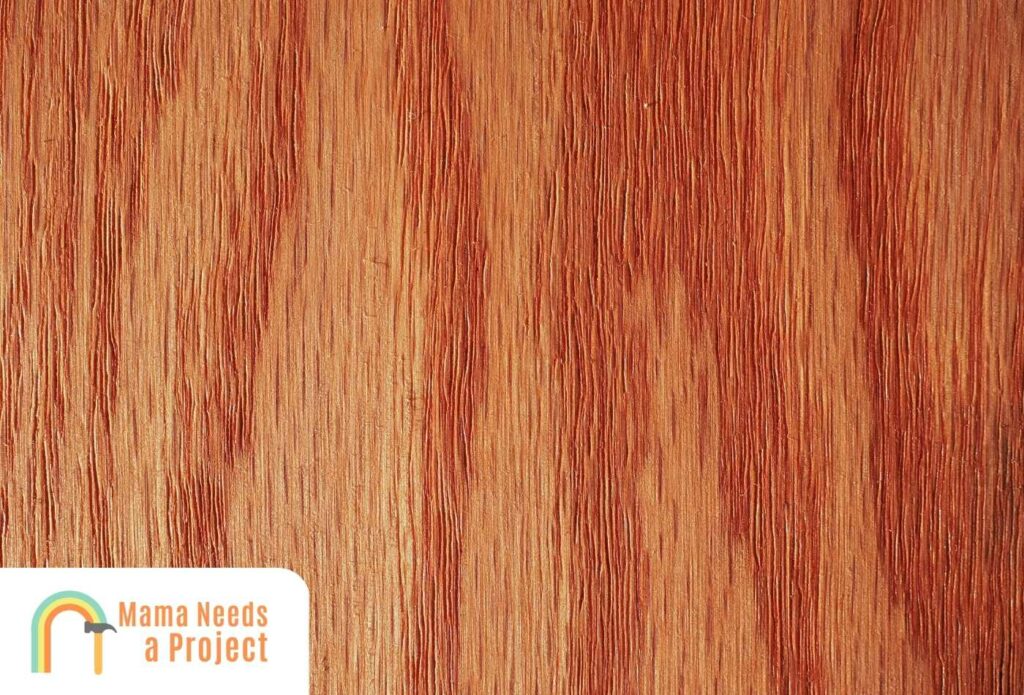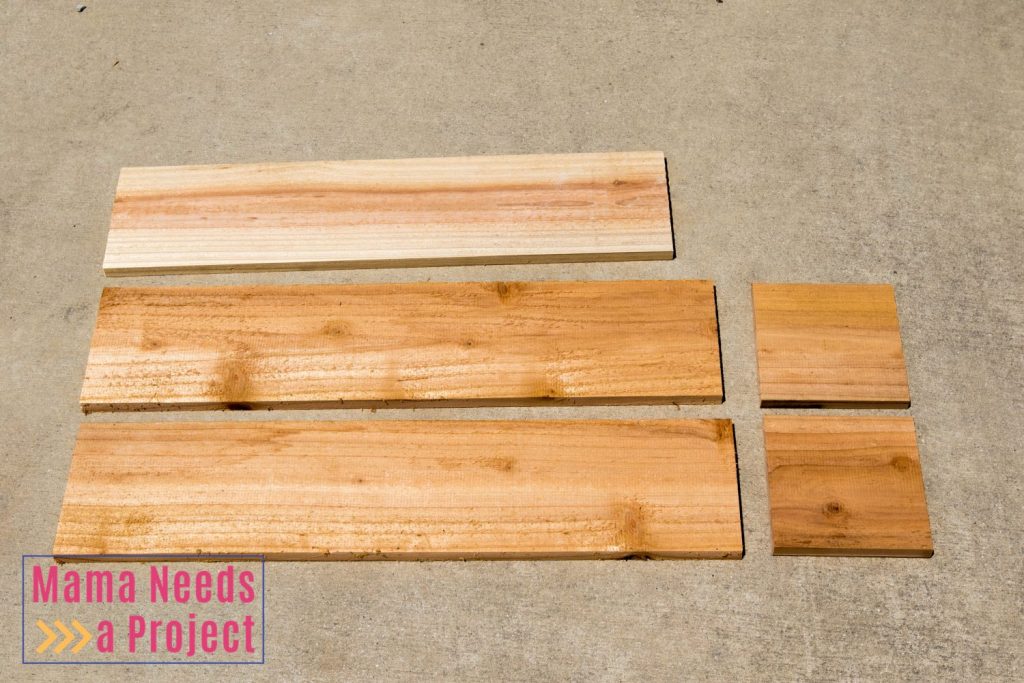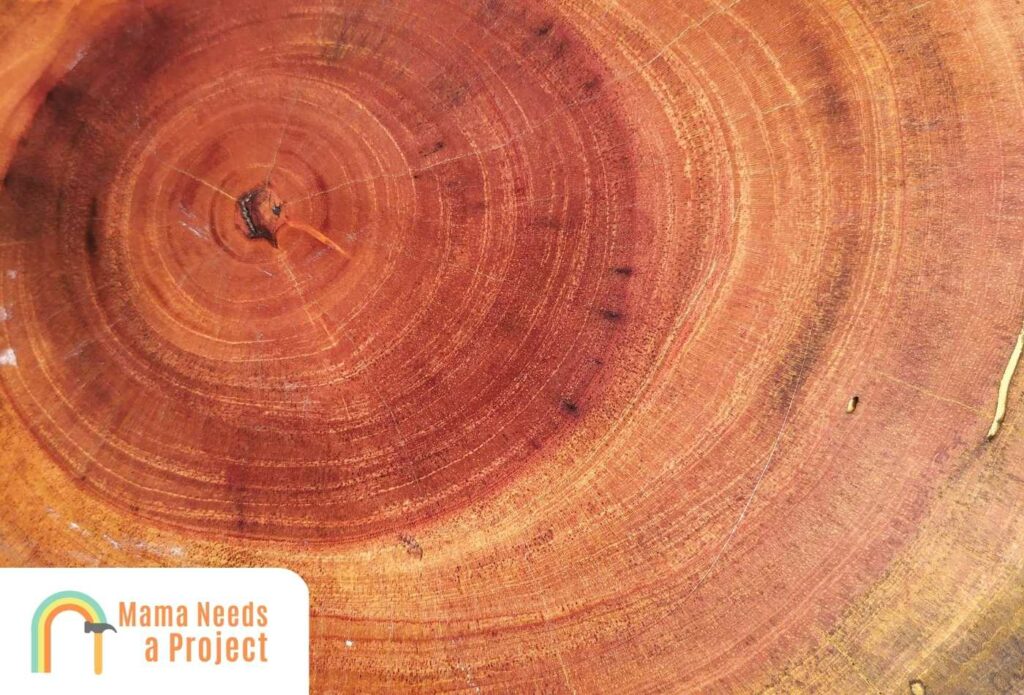10 Best Woods for Bed Frames (Expert Picks!)
Have you ever considered making your own bed frame?
Trust me, even inexperienced DIYers and woodworkers can make their own bed frames!
If you’re sleeping on an old metal bed frame or worse, a mattress on the floor, give your hand a try at making a bed frame for yourself. You’ll be surprised how much fun it can be.
In this post, I’ll explain the best wood for bed frame construction and the step-by-step process to make your very own. Let’s dig in!
- Some of the best wood for making bed frames include oak, pine, birch, and maple. These will last for years and look amazing in any room.
- When choosing the type of wood for your bed frame, you’ll want to consider the durability, appearance, cost, and maintenance of the wood.
Best Wood for Wooden Bed Frame

1. Oak
When it comes to durable wood species for bed frames, oak is at the top of my list. A white or red oak bed frame is tough enough to withstand the wear and tear of everyday use and can last you a lifetime.
Here’s what red oak looks like.

Oak has a wavy grain that gives it a distinctive appearance, and it’s used in many types of furniture.
Pros
- The close grains provide strength and resistance to warping
Cons
- Expensive and extremely heavy which can make it difficult to build on your own
2. Cherry
Cherry wood is another popular wood among woodworkers because it’s a versatile species that is easy to work with. Because it is naturally resistant to decay, it is often used to make outdoor furniture, and it’s one of the best woods for turning on a lathe.
Although cherry isn’t as strong as wood like oak and maple, it’s durable enough for most bed frames. I love how cherry wood darkens over time to a lovely reddish brown color.
Pros
- Attractive and strong
Cons
- Pricier than other bed frame materials, including oak and maple
3. Walnut
Looking for something that can last for up to a century with proper maintenance? Walnut wood could be the perfect choice for your wood bed frame! It’s known for its spectacular colors. I’m a big fan that the heartwood is a dark chocolate brown, while the sapwood, which is the wood around the heart, is a golden blonde color.
It’s common to see unique grain patterns in walnut wood, although it is generally straight-grained. It’s a strong wood, and one of its best traits is that it doesn’t change shape when exposed to moisture or heat helping to maintain its integrity.
Pros
- Unique colorful wood with a deep warm tone
Cons
- Heavy and can be scratched easily
4. Cedar

Cedar is one of the softest woods you can use, which makes it less durable than hardwoods like oak and maple. However, in my book, cedar has traits that make up for its softness.
Even though it’s a softwood, cedar is durable. It’s used for a lot of woodworking projects because it is easy to work with and has nice straight grains. It has a distinct smell that gives it natural pest resistance and it’s a great wood for turning as well.
Pros
- Exceptionally light
Cons
- Prone to cracking and splitting if not properly cared for
5. Pine
Pine wood is one of the least expensive types of lumber you can get, but that’s not the only reason I put pine on my list of the best wood for bed frames.
Yellow pine has plenty of strength for making indoor furniture and is a popular choice for things like bed frames, shelves, and dressers.
When you’re making bed frames, especially the first time, it’s best to choose a wood type that’s easy to work with. Because pine wood is soft, it’s easier to cut and shape making it a perfect choice for beginners.
Pros
- Inexpensive and easy to obtain
Cons
- More prone to wear and tear because it can be scratched or dented easily
6. Douglas Fir
Douglas fir has many of the same characteristics as pine, although it is a harder softwood and a better all-around choice for building sturdy bed frames.
If you’re looking for an inexpensive wood for a bed frame, Douglas fir is a great choice. It’s a little easier to work with than pine because it has fewer knots.
Pros
- It’s easy to find long boards with straight grains
Cons
- More expensive than pine
7. Ash
Ashwood is one of the best-kept secrets of woodworking. It’s often overlooked, but it has a similar strength and density to oak wood which is great for making solid wood bed frames. But what’s even better is that the nice straight grains make it easier to work with than white oak or maple.
Ash is one of the least expensive hardwoods you can buy simply because the supply is able to meet the demand. If you’re looking for solid wood for a heavy mattress, ash is going to be one choice you want to consider.
Pros
- Durable and easy to find in lumber stores all over the United States
Cons
- Color matching can be difficult because ash is usually sold with a mix of heartwood and sapwood
8. Mahogany

Well-known for making fine furniture, boats, and musical instruments, mahogany is a tropical tree species that grows in places like Cuba, Jamaica, and the Caribbean. Since it is one of the most in-demand hardwoods, it has been overharvested in many areas which can make it slightly more expensive and less environmentally friendly.
Mahogany makes beautiful furniture with a nice reddish brown color. Be careful if you’re working with this type of wood, though, because some people are allergic to mahogany dust, which can cause problems.
Pros
- The natural beauty and strength of mahogany is hard to resist
Cons
- Environmental concerns and high demand make this an expensive choice
9. Birch
I personally love the clean look of birch wood. It’s typically fine-grained wood with a uniform texture and makes beautiful furniture of all types.
One of the biggest drawbacks of birch is that it doesn’t hold up to extreme conditions. However, it’s a great choice for indoor wood furniture like bed frames.
Pros
- The combination of this wood’s striking appearance and price is hard to beat
Cons
- Hard to sand and smooth
10. Maple
Solid wood like maple will give you a good night’s sleep, and you won’t have to worry about creaking noises because this is one of the heaviest types of wood you can use.
When you want extremely hardwood for your bed frame, choose either rock maple or sugar maple. Maple sapwood is a creamy color with a fine grain, and it makes an ideal bed frame choice.
Pros
- The remarkable durability of maple and the moderate pricing makes it a top choice
Cons
- Heavy but not resistant to insect attacks
Selecting the Best Wood for Bed Frames
Appearance
Do you like distinctive grain structures or do you prefer a closed grain pattern? The texture of the wood is a primary consideration when you’re selecting a wood for your bed frame.
Another factor to consider is the color. You can always stain wood different colors, but it’s impossible to replicate the rich, deep hues of mahogany or other colors.
Durability and Strength
When describing different types of wood, durability and strength are related words, but they don’t mean the same thing.
Durability usually refers to how long something will last, or its longevity. Many types of wood, such as cedar, are durable but they aren’t particularly strong, like red oak.
Strength relates to how much pressure wood can bear and what kind of loads it will support. Strong woods like maple and white oak are the best choices if you need superior strength for heavier frames.
A wood’s ability to resist wear and tear is also important. Some types of wood, like pine, are strong, but because they dent and scratch easily, they are considered less durable.
Cost
Wood varies considerably in price depending on the type you choose. For most of us, our project budget is a major factor when we’re choosing building materials.
If it’s your first time building a DIY bed frame, my advice is to choose inexpensive woods and materials. After you have some practice you can experiment with higher end materials and techniques.
Here’s a great video showing how to build a quality wood bed frame!
DIY Bed Frames
If you’re wondering if DIY bed frames are a good idea, the answer is a resounding “yes.” Wooden bed frames are expensive and they are a simple project that anyone can do.
Is It Cheaper to Make Your Own Bed Frame?
It’s a lot cheaper to make your own bed frame, and the construction quality is often much better. The average cost of a DIY bed frame is about $150 to $200.
Compare that to the cost of a prefabricated wood frame (which you’ll probably have to assemble at home.) Wooden bed frames usually cost anywhere from $300 to $1,000. For a really nice one, you could easily spend up to $2,000.
Bed Frame Sizes
Mattresses come in standard sizes, and your bed frame needs to correspond with the size of the mattress you have. Choose one of the following sizes, making sure to give yourself ample room.
- Twin– 38″ wide by 75″ long
- Twin XL– 38″ wide by 80″ long
- Full– 54″ wide by 75″ long
- Queen-60″ wide by 80″ long
- King– 76″ wide by 80″ long
- California King– 72″ wide by 84″ long
How to Make a DIY Wood Bed Frame
If you love to work with wood, a DIY wood bed frame is one of the best furniture projects for beginners. Construction of a bed frame is simple and straightforward, which means anyone can do it.
Once you select the type of wood for your bed frame, follow these steps.
Step 1: Tools and Materials
The first step is to gather your tools and materials. Here is what you’ll need:
- Drill
- Sander and sandpaper
- Hammer
- Chisel
- Router
- Pocket jig
- Circular saw
- Glue
- Screws, wood screws, and finishing nails
- Paint or stain and brushes
- Clamps
- Square
- Level
- Bed frame plans
Step 2: Measure and Cut
Following the plans for your bed frame, measure and cut the pieces of wood for the frame.
Once you have the wood cut, sand it, going with the grain to avoid damaging the wood.
Step 3: Install the Bed Brackets
Bed rail brackets make assembly easy, and they also make it easier to move your bed in the future. They are attached to the rails and the legs to
Choose mortise or no-mortise brackets, and mark the location where the brackets will go on the rails and posts. Then, attach the brackets with 2 1/2″ screws.
Step 4: Assemble the Frame
Assemble the rails and legs of the bed frame. If you’re not using bed brackets, use a pocket jig to secure the posts and rails to create the frame.
Ensure that the frame is square and level before adding at least two center support beams, using either brackets or the pocket jig method.
Step 5: The Bed Slats
In my opinion, birch and pine are the best wood for bed slats. Pine wood works great for smaller beds with light mattresses. For heavier frames, use birch.
Measure and cut the bed slats from 1×3 or 1×4 lumber, then sand them. Space at least 4-5 bed slats across the center beams and on top of the rails to support the mattress and secure them in place.
Step 6: The Aprons, Headboard, and Footboard
The wood you choose for the aprons, headboard, and footboard will be the most visible. Use 1×8 wood for the apron pieces and secure them to the rails from inside the bed frame.
You can choose from many different styles of headboards. I made an upholstered headboard for my bed, but there are limitless options, and you can be as creative as you want.
Step 7: Finishing With Paint or Stain
Once your bed is assembled, finish it with paint or stain. If you stain it, you may also want to seal it to protect the wood even further. Allow it to dry completely.
Final Thoughts
You can have the bed of your dreams by making it yourself!
Constructing bed frames is something that novice woodworkers can do, and it’s fun. There is a lot of satisfaction that comes with making furniture, especially a bed, which you use every day.


